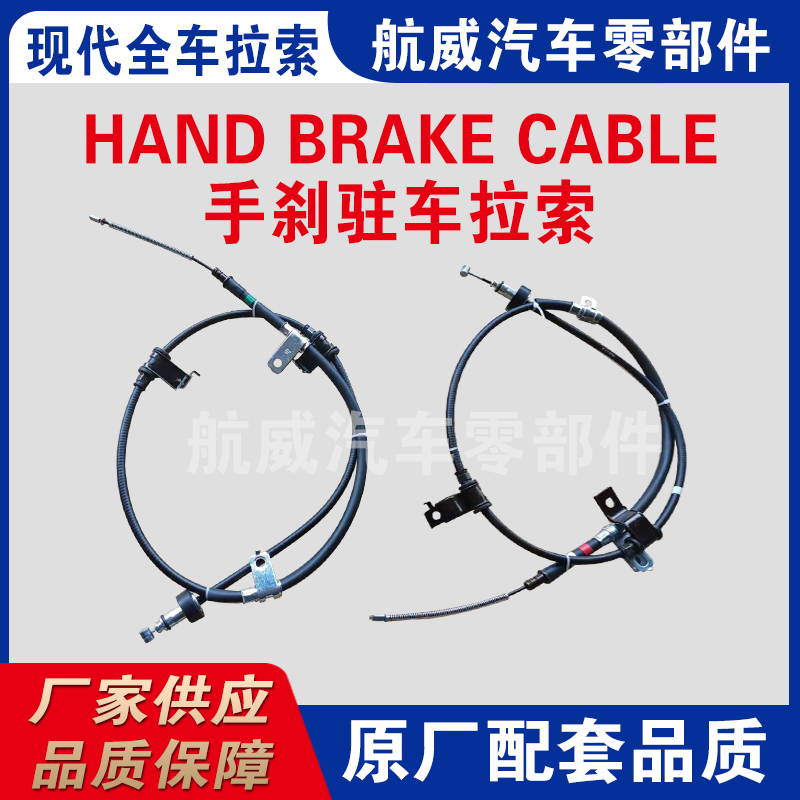automatic shift cable
Understanding Automatic Shift Cables Function, Importance, and Maintenance
Automatic shift cables play a crucial role in the functionality of modern vehicles, particularly those equipped with automatic transmissions. These cables serve as a vital link between the transmission and the gear shifter inside the vehicle, translating the driver’s intentions into mechanical actions that change the vehicle’s gears smoothly and efficiently. This article delves deeper into the function, importance, and maintenance of automatic shift cables, offering insight into why they are essential for vehicle operation.
The Function of Automatic Shift Cables
At its core, the automatic shift cable is a flexible steel wire encased in a protective sheath. It connects the shift lever to the transmission, allowing the driver to choose the appropriate gear with ease. When the driver moves the gear shifter, the cable transmits this movement to the transmission assembly, which then engages or disengages the appropriate gears. This process is crucial for seamless acceleration and deceleration, enhancing the overall driving experience.
The shift cable also incorporates various components, including the cable housing, end fittings, and a mechanism to allow for adjustments. The design of these cables allows for minimal friction, ensuring that shifts occur quickly and smoothly, which is especially important during rapid acceleration or deceleration situations.
Importance of Automatic Shift Cables
The importance of automatic shift cables cannot be overstated. They directly influence the performance of the transmission system. A well-functioning shift cable ensures that the gears shift precisely according to the driver's commands. On the other hand, a damaged or worn cable can lead to several issues, including difficulty in shifting, erratic gear engagement, and even the inability to change gears at all. Such problems can seriously impair the vehicle's drivability and lead to further transmission issues if not addressed promptly.
Moreover, in an era where vehicles are increasingly dependent on technology and computerized systems, the role of the automatic shift cable remains vital even as manufacturers innovate ways to enhance performance and safety. The reliability of this simple yet essential component is crucial for the effectiveness of automatic systems such as adaptive cruise control and advanced stability management systems, which depend on accurate gear transitions.
automatic shift cable

Common Issues and Maintenance
Like any mechanical component, automatic shift cables are subject to wear and tear over time. Some common issues include fraying, kinking, or corrosion, which can hinder the cable's performance. Regular inspection of the shift cables can help identify potential problems before they escalate.
To maintain automatic shift cables, vehicle owners should adhere to the following practices
1. Regular Inspections Periodically check the cables for any signs of wear, such as fraying or stiffness. Pay attention to the cable housing as well, ensuring that it is free from cracks or damage.
2. Lubrication Proper lubrication of the shift cable can reduce friction and prolong its lifespan. However, care must be taken to use appropriate lubricants, as some substances can degrade the cable's materials.
3. Replacement If any signs of significant wear or damage are observed, it is essential to replace the shift cable promptly. While replacing it might seem like a daunting task, many automotive professionals can perform this service efficiently.
4. Professional Help Enlisting the assistance of a trained mechanic for routine maintenance or if problems arise can ensure that the shift cables and related components function optimally.
In conclusion, automatic shift cables are an indispensable part of any vehicle equipped with an automatic transmission. Their role in facilitating smooth gear changes enhances both performance and safety. By understanding their function, recognizing the importance they hold, and practicing regular maintenance, vehicle owners can ensure that their automatic transmission systems remain reliable and efficient. Ignoring these cables could lead to larger transmission issues down the line, emphasizing the need for awareness and proactive care.
-
Workings of Clutch Pipe and Hose SystemsNewsJun.04,2025
-
The Inner Workings of Hand Brake Cable SystemsNewsJun.04,2025
-
The Secrets of Throttle and Accelerator CablesNewsJun.04,2025
-
The Hidden Lifeline of Your Transmission Gear Shift CablesNewsJun.04,2025
-
Demystifying Gear Cables and Shift LinkagesNewsJun.04,2025
-
Decoding Clutch Line Systems A Comprehensive GuideNewsJun.04,2025
